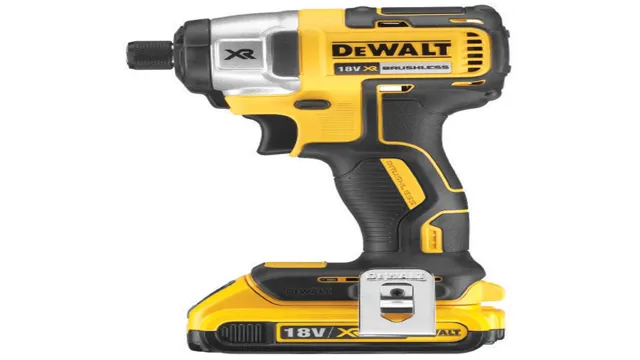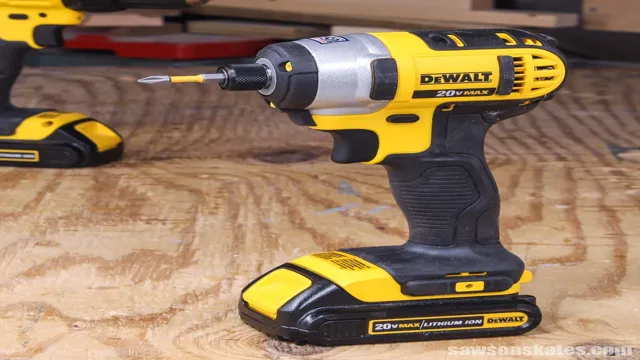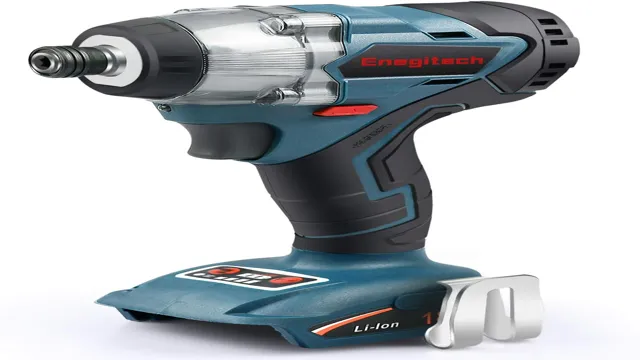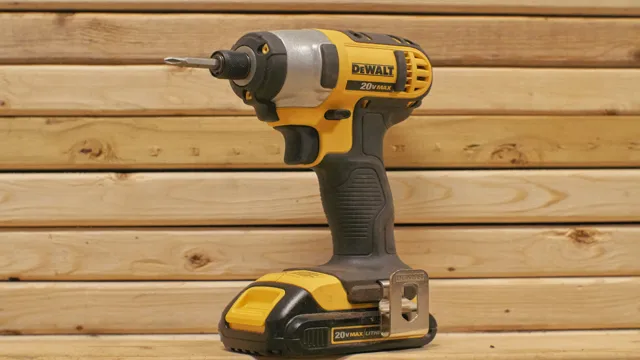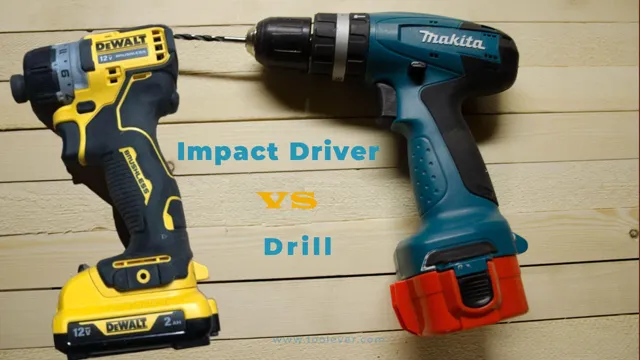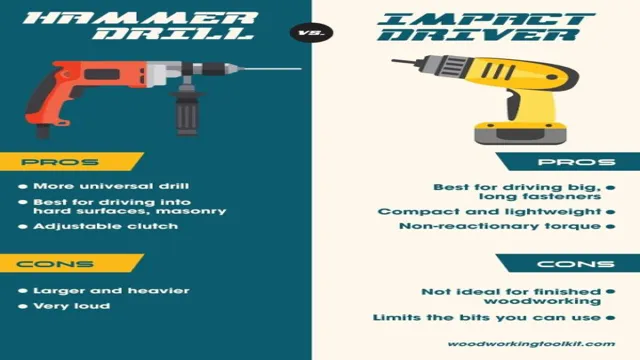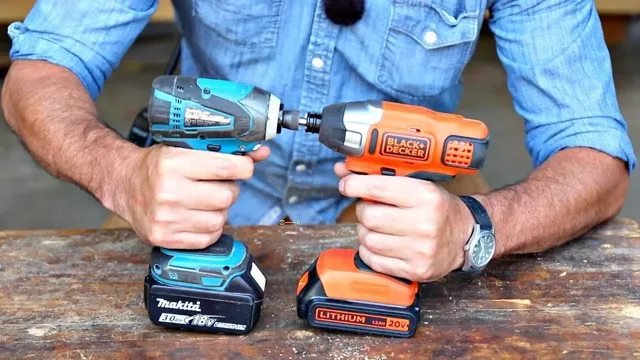Is an Impact Driver the Same as a Screwdriver? Know the Key Differences to Find Out!
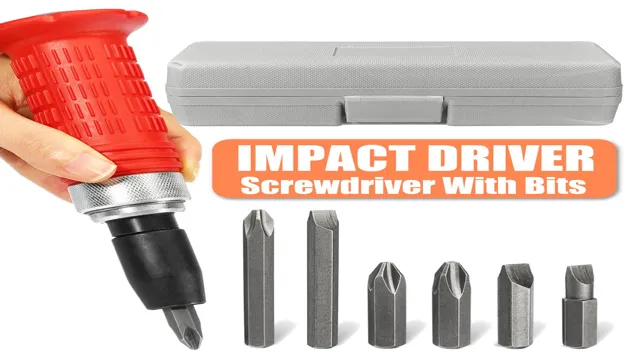
Are you clueless about the difference between an impact driver and a regular screwdriver? Do you find yourself asking, “Which one is better for my DIY project?” Well, fret no more! We’ve got you covered. In this blog post, we’ll discuss the crucial differences between these two tools and help you decide which one to use for your next project. Think of a screwdriver as a trusty old friend – always reliable and present when you need it.
It’s a tool that most of us have used at some point in our lives and is an essential part of any household or toolbox. On the other hand, an impact driver is the cool new kid in town – a powerful, fast, and efficient tool that can tackle more challenging jobs. But what sets these two tools apart? While both are used to drive screws into a material, they differ in their mechanism.
A screwdriver relies solely on your strength to turn the screw by hand, whereas an impact driver uses a combination of rotational force and concussive blows to install or remove screws efficiently. An impact driver can produce much higher torque and speed than a screwdriver, making it ideal for jobs that require more power. Whether you’re installing decking, building a fence or working on your car, an impact driver can make quick work of even the toughest jobs.
On the other hand, a screwdriver is better suited for tasks that require precision, especially when dealing with small screws or fragile materials. So, what’s the verdict? If you’re a DIY enthusiast working on simple projects around the house, a regular screwdriver might be all you need. But if you’re a serious DIY-er or a professional contractor, investing in an impact driver can significantly speed up work time and help you tackle more demanding jobs.
To sum it up, a screwdriver may be your reliable, old friend, but an impact driver is the new, powerful tool that packs a punch. Understanding the differences between these two tools will help you make an informed decision and choose the right tool for your project.
What is an Impact Driver?
Many people ask, “Is an impact driver the same as a screwdriver?” The short answer is no, they are not the same. An impact driver is a power tool that delivers high torque with sudden rotational bursts, while a screwdriver simply turns screws. Impact drivers are designed to provide more force and speed, making them ideal for tougher jobs like construction and DIY projects.
They are also equipped with special features such as hexagonal collets that allow you to change bits quickly and easily. In contrast, screwdrivers are manually operated and come in various types, including Phillips, flathead, and torx. They are perfect for smaller tasks, such as tightening screws on furniture or appliances.
In summary, impact drivers are not the same as screwdrivers, and each tool has its unique purpose and strengths.
Function and Design
An impact driver is a tool that simplifies and speeds up the process of driving screws into hard surfaces such as concrete, metal, or wood. It does this by using a pulsing, rotational force that delivers much more power than a standard drill. The tool works by a combination of its high rotational speed and torque, which allows it to drill into hard materials with ease.
Impact drivers are designed to be compact, lightweight, and easy to operate, which makes them ideal for DIY tasks around the home or for professionals who need to work on building sites. They are versatile tools that can help you perform a wide range of tasks, from assembling furniture to building decks and even automotive repair. Next time you need to drive screws into a hard surface, consider using an impact driver to make the job go faster and smoother.
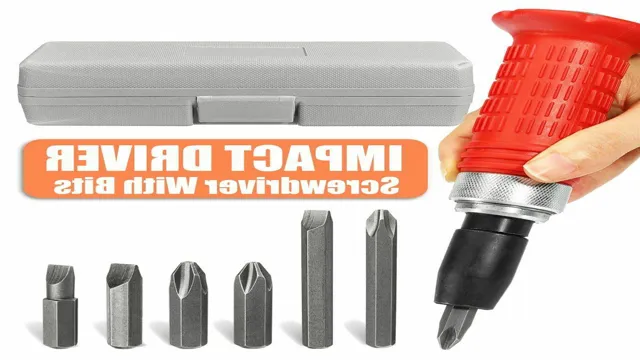
Use Cases
An impact driver is a power tool that is designed to drive screws into tough materials like hardwood and concrete. It uses rotational force, similar to a regular drill, but with more torque and less speed. Impact drivers have a quick-release chuck that allows users to change out bits easily.
They also have a unique mechanism that delivers huge rotational force in short bursts. This mechanism generates a lot of noise, but it ensures that the impact driver can handle the toughest jobs. Impact drivers are often used by professionals in the construction industry and DIY enthusiasts for tasks like decking, framing, and building shelves.
They are battery-powered, making them highly portable and easy to handle. In conclusion, an impact driver is a powerful and versatile tool that can save time and effort when it comes to working on tough materials.
Advantages and Disadvantages
An impact driver is a type of power tool used for driving screws and bolts, especially in tight spaces and dense materials. It delivers higher torque than a regular drill driver and features a rotational hammer action to produce tremendous force without slipping. The main advantage of an impact driver is its efficiency and speed in completing tasks, as well as its ability to handle tough jobs with ease.
It can also reduce user fatigue due to its lightweight design and decreased kickback. However, one of the disadvantages is its loud noise level, which can be deafening and inconvenient for those nearby. Additionally, it may not be suited for delicate work or tasks that require precision.
Overall, impact drivers are a valuable tool for both DIY enthusiasts and professional contractors, but it is important to weigh their advantages and disadvantages before deciding whether to invest in one.
What is a Screwdriver?
When it comes to tools, people often get confused about what’s what. Such is the scenario with screwdrivers and impact drivers. While both of them are used for driving screws, they are not the same.
A screwdriver is a manual tool with a handle, shaft, and tip designed to turn screws, whereas an impact driver is a powered tool that uses rotational force to drive screws into a material. An impact driver is more powerful than a screwdriver and can drive screws faster and with a greater amount of force. It’s also easier to use, making it an excellent choice for larger projects that involve lots of screws.
So if you are looking for speed and don’t want to put in too much effort manually, then an impact driver might be the right choice for you. However, if you prefer something more traditional and simple, then a screwdriver is the tool you need.
Function and Design
A screwdriver is an essential tool in every household and workshop. It is a handheld tool used for inserting and removing screws. The basic design of a screwdriver includes a handle and a shaft, which holds a pointed tip, called a blade.
The size and shape of the blade may vary depending on the type of screw it is intended to work with. A flathead screwdriver has a straight, flat blade used for screws with a single slot on top, while a Phillips screwdriver has a cross-shaped blade used for screws with a cross-shaped slot on top. A screwdriver is an incredibly versatile tool that can be used for various tasks, from assembling furniture to repairing electronics.
The handle of a screwdriver is typically made of plastic or rubber, providing a comfortable and secure grip. Overall, a screwdriver is an indispensable tool that facilitates various household and industrial tasks.
Use Cases
A screwdriver is an essential tool that is used to drive in screws or remove them from surfaces. It consists of a handle and a shaft that has a tip for fitting into the head of the screw. The shaft’s shapes vary depending on the type of screwdriver, and they are designed to fit into screw heads that come in different shapes as well.
Screwdrivers come in a range of sizes, and they are useful for a variety of tasks, from assembling furniture to repairing electrical appliances. They are also commonly used in woodworking, construction, and automotive repairs. In fact, screwdrivers are so versatile that they are a staple in any toolbox.
The primary purpose of a screwdriver is to apply torque to screws, which enables the user to either tighten or loosen them. Whether you are a professional mechanic or a DIY enthusiast, having a screwdriver on hand is always a good idea.
Advantages and Disadvantages
A screwdriver is a tool used to turn screws, which consist of a shaft with a tapered helical groove along the length of the shaft. The screwdriver has a handle that is held in the hand, providing leverage and stability to turn the screw. One of the major advantages of a screwdriver is that it can be used to tighten or loosen screws of various sizes and types, making it a versatile tool for many different applications.
Another advantage is that screwdrivers are available in a range of sizes and styles, from the small precision screwdrivers used in electronics to the larger flathead and Phillips screwdrivers used in construction. One disadvantage of using a screwdriver is that it can take time and effort to turn screws by hand, especially if the screw is large or tight. Additionally, using the wrong size or type of screwdriver can cause damage to the screw or the tool, which can be frustrating and costly to repair.
Overall, screwdrivers are an essential tool in any toolbox, with their advantages outweighing their few disadvantages.
Differences between Impact Driver and Screwdriver
Many people often wonder if an impact driver is the same as a screwdriver. Although both tools are used for driving screws, they are different in many ways. A screwdriver is a manual tool that requires physical strength to turn the screw.
On the other hand, an impact driver is a power tool that uses a spinning motion combined with concussive force to tighten or loosen screws. The impact driver is perfect for larger and more challenging projects because it reduces the amount of strain put on your hand and wrist. Another major difference between the two tools is the speed.
An impact driver is faster and more efficient than a screwdriver, so it is the better choice for quickly getting the job done. Additionally, impact drivers are more versatile than screwdrivers as they can be used on various types of screws and materials. In conclusion, while the impact driver and screwdriver are both used for driving screws, they have significant differences that make them more appropriate for different jobs.
Functionality and Design
When it comes to getting the job done, having the right tools can make all the difference. While both impact drivers and screwdrivers are used to drive screws into materials like wood and metal, there are some notable differences in their functionality and design. For starters, impact drivers are typically more powerful and faster than screwdrivers, making them ideal for heavier duty jobs.
They also have a hexagonal chuck that allows for easy swapping of bits and a driving mechanism that delivers high torque with minimal effort. Screwdrivers, on the other hand, are typically more lightweight and compact, making them ideal for smaller tasks like assembling furniture or hanging pictures. They also have a traditional chuck that accepts various sizes of screwdriver bits.
Overall, knowing the difference between the two can help you choose the right tool for the job and ensure that you get the best results possible.
User Experience and Efficiency
When it comes to home DIY projects, choosing the right tool can make all the difference in terms of user experience and efficiency. Two popular tools for driving screws are the impact driver and screwdriver. While both tools can get the job done, there are some key differences to consider.
Impact drivers are more powerful and efficient than screwdrivers because they deliver higher torque and have a fast rotation speed. They are perfect for heavy-duty jobs such as building decks or installing cabinets. On the other hand, screwdrivers are better suited for lighter-duty tasks such as assembling furniture or hanging picture frames.
They have lower torque and a slower rotation speed, allowing for precision and control. Ultimately, the decision between an impact driver and screwdriver will depend on the specific job at hand. So, take the time to assess your needs and evaluate the task to choose the right tool for the job.
Conclusion
In conclusion, while both an impact driver and a screwdriver may seem like interchangeable tools, they actually have unique qualities that make them suited for different tasks. An impact driver is like the rebellious younger sibling of the screwdriver, packing a powerful punch that can effortlessly drive screws into even the toughest materials. So, while they may look similar, don’t confuse the two – unless, of course, you’re looking for a little excitement in your DIY projects.
“
FAQs
What is an impact driver and how does it differ from a screwdriver?
An impact driver is a power tool designed for driving screws and other fasteners with high torque and minimal user effort. Unlike a traditional screwdriver, which relies on manual force to turn the fastener, an impact driver uses a combination of rotational force and concussive blows to drive the screw into place more quickly and easily.
Can an impact driver be used in place of a screwdriver?
While an impact driver can technically be used in place of a screwdriver, it is not always the best option. Impact drivers are more powerful and efficient, but they can also be more difficult to control and could potentially damage the surrounding material if not used carefully. Screwdrivers are better for delicate or precise work that requires more finesse.
Are there different types of impact drivers available?
Yes, there are several different types of impact drivers, including corded, cordless, brushless, and hydraulic models. Corded impact drivers are powered by an electric cord, while cordless versions rely on rechargeable batteries. Brushless models are generally more efficient and last longer, while hydraulic drivers are designed for heavy-duty applications.
What types of screws can be used with an impact driver?
Impact drivers are compatible with a wide range of screws, including Phillips head, square drive, Torx, and hex head screws. However, it’s important to choose the right type of bit for the screw you’re using to ensure a secure fit and prevent stripping or damage to the fastener.
How do you properly use an impact driver?
To use an impact driver, first select the appropriate bit for the screw you’re driving. Insert the bit into the chuck and tighten it securely. Position the tip of the screw over the desired location and squeeze the trigger to start driving the screw. Always wear appropriate safety gear, such as eye protection and earplugs, and be sure to read the manufacturer’s instructions before use.
Can impact drivers be used for other tasks besides driving screws?
Yes, impact drivers can also be used for tasks such as drilling smaller holes and removing stuck or rusted screws. However, it’s important to use the right bit or attachment for each task to avoid damaging the material or the tool.
Is it necessary to lubricate an impact driver?
It’s a good idea to lubricate the chuck and the internal workings of the impact driver periodically to ensure smooth operation and to prevent wear and tear. Use a light oil, such as 3-in-1 oil, and apply a small amount to the chuck and other moving parts. Wipe away any excess oil with a clean cloth.

